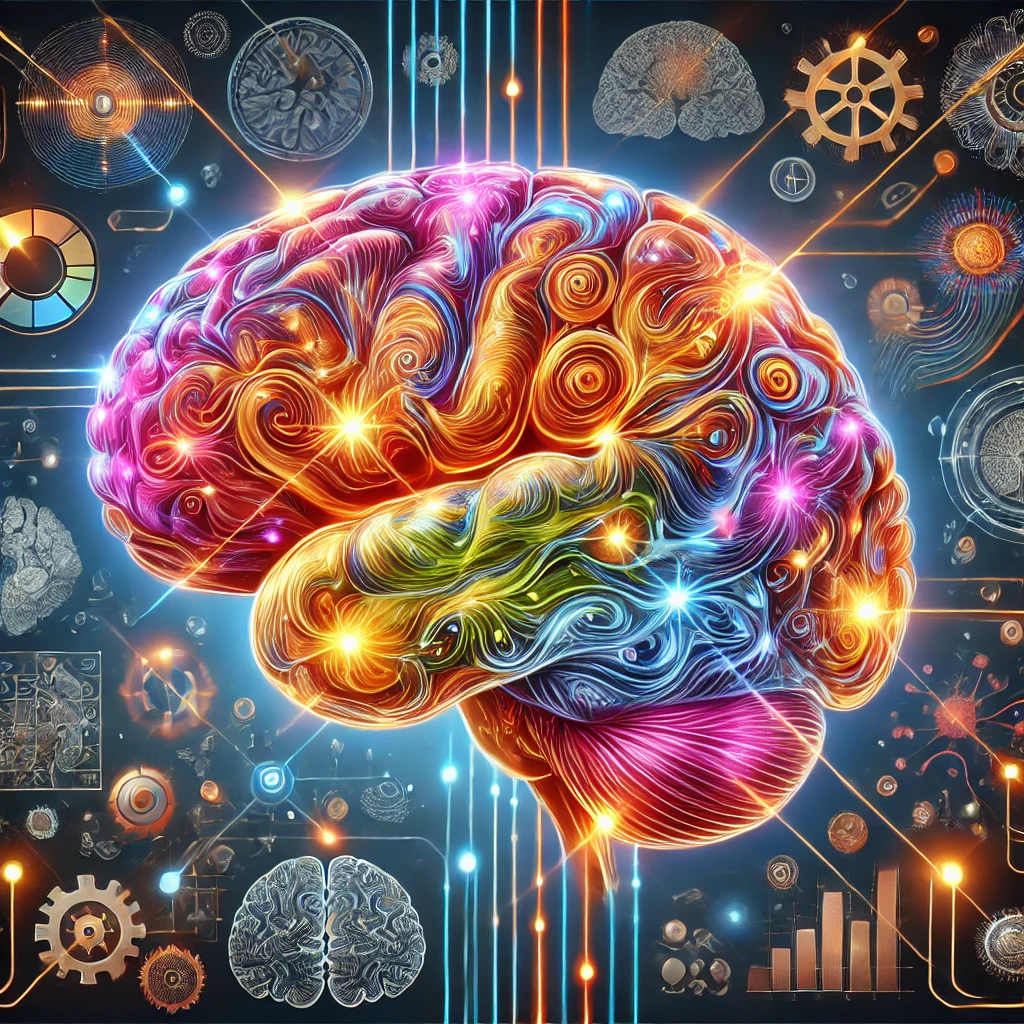The internet, a universal force in our modern world, has woven itself into the fabric of our daily lives. But how did this vast network of interconnected devices come to be? And how has it transformed the way we communicate, learn, and interact with the world around us? This blog delves into the fascinating story of the internet, exploring its history, technical aspects, societal impact, and future potential.
Table of Contents
A Journey Through Time: The Internet’s Evolution
The internet’s roots trace back to the late 1960s with the ARPANET project, a U.S. Department of Defense initiative aimed at connecting academic and research institutions. The groundwork for a global network was laid in the 1970s and 1980s with the development of TCP/IP protocols, a standardized language for data communication. However, the true turning point arrived in 1989 with the invention of the World Wide Web by Tim Berners-Lee. This user-friendly interface, characterized by hyperlinked web pages, revolutionized internet accessibility, opening the door for the general public to join the digital revolution.
Since its inception, the Internet has transformed from a simple network for researchers to a global communications and information center. From dial-up connections to high-speed broadband, the pace of connectivity has accelerated dramatically. The proliferation of mobile devices like smartphones and tablets has further expanded internet access, making it a truly mobile experience. Social media platforms have emerged as powerful tools for communication and community building, while cloud computing has transformed how we store and access data. The Internet of Things (IoT) promises a future where everyday objects are connected to the internet, blurring the lines between the physical and digital worlds.
The Nuts and Bolts: How the Internet Works
Understanding the internet’s technical underpinnings is crucial to appreciating its power. Here’s a glimpse into the key technologies that make the internet tick:
- TCP/IP Protocols: These protocols act as the internet’s communication language, ensuring data is broken down into packets, addressed correctly, and reassembled seamlessly at its destination.
- DNS (Domain Name System): Think of DNS as the internet’s phonebook. It translates human-readable domain names (e.g., [invalid URL removed]) into numerical IP addresses that computers can understand.
- HTTP/HTTPS: These protocols govern how web pages are transferred across the internet. HTTPS adds an extra layer of security, encrypting data to protect sensitive information.
- Routers and Switches: These network devices act as traffic directors, intelligently routing data packets along the most efficient paths to their intended recipients.
- Servers: Servers are the workhorses of the internet. They store and manage data, websites, and applications that are accessible to users through the internet.
Data centers, housing massive server farms, play a crucial role in this ecosystem. Undersea cables, fiber-optic networks, and satellites form the intricate infrastructure that transmits data across vast distances, connecting people and devices worldwide.
The Impact of the Internet on Society: A Web of Change
The internet’s influence on our lives is undeniable. It has fundamentally transformed how we interact with the world around us. Here are some key areas where the internet has made a significant impact:
- Communication: Instant messaging, video conferencing, and social media platforms have revolutionized communication, enabling us to connect with anyone, anywhere in the world, in real-time.
- Information Access: The internet offers a treasure trove of information at our fingertips. Search engines provide instant access to a vast array of knowledge, while online learning platforms and educational resources empower individuals to expand their skillsets.
- Business and Commerce: E-commerce has transformed the way we shop, offering unparalleled convenience and access to a global marketplace. Businesses leverage the internet for marketing, communication, and collaboration, fostering innovation and efficiency.
- Education and Learning: Online courses, educational resources, and virtual classrooms have democratized access to education. Students can now learn from renowned institutions across the globe, regardless of their location.
However, the internet’s impact extends beyond convenience. It has also raised crucial social and ethical concerns. Issues like privacy, security, and the digital divide require careful consideration. We must strive to ensure equitable access to this powerful tool and address the potential pitfalls associated with an increasingly interconnected world.
Delving Deeper: Technical Aspects of the Internet
To fully grasp the internet’s functionality, let’s delve into the technical aspects that govern its operation:
- Servers, Routers, and Data Centers: As mentioned earlier, servers store and manage data, routers direct data packets, and data centers house massive server farms. Understanding their interconnected roles is essential for appreciating the internet’s infrastructure.
- IP Addresses: Each device connected to the internet has a unique IP address, a numerical label that identifies and locates it on the network. Think of it as a digital house number, allowing data to be delivered to the correct destination.
- Packet Switching: Data travels across the internet in small units called packets. Packet switching is a method where data is broken down into these packets, transmitted independently through various network paths, and then reassembled at the receiving end. This optimizes bandwidth and ensures efficient data transfer.
The Internet and Society: A Double-Edged Sword
The internet’s influence on society is a double-edged sword. Here’s a closer look at both the benefits and challenges it presents:
Benefits:
- Education and Learning: As discussed earlier, the internet offers a wealth of educational resources, democratizing access to knowledge and empowering individuals to pursue lifelong learning.
- Communication and Social Interaction: The internet has revolutionized communication, fostering connections and fostering communities that transcend geographical boundaries. Social media platforms have become powerful tools for staying in touch, sharing experiences, and collaborating with others.
- Business and Commerce: E-commerce has transformed the way we shop, offering access to a global marketplace and fostering innovation in business operations. The internet facilitates remote work, collaboration, and communication, driving efficiency and productivity.
- Information Access: The internet provides instant access to a vast amount of information, empowering individuals to stay informed, research topics of interest, and explore diverse viewpoints.
Challenges:
- Privacy and Security: The internet presents significant privacy and security concerns. Data breaches, malware attacks, and online scams threaten user security. There’s also a growing concern about data collection and the potential for misuse of personal information.
- Digital Divide: Unequal access to the internet, particularly in underserved communities, exacerbates existing inequalities. The digital divide limits opportunities for education, employment, and participation in the digital economy.
- Misinformation and Disinformation: The rapid spread of misinformation and disinformation on the internet poses a significant challenge. The ability to critically evaluate information and identify reliable sources becomes crucial in today’s digital age.
- Addiction and Mental Health: Excessive internet use can lead to addiction and negatively impact mental well-being. Striking a healthy balance between digital and real-world interaction is essential.
Security and Privacy: Protecting Your Digital Life
The internet’s vast potential is accompanied by inherent security and privacy risks. Take control of your online safety with these tips:
- Strong Passwords and Two-Factor Authentication: Use strong, unique passwords for all your online accounts and enable two-factor authentication where available. For enhanced security, a second verification step is required in addition to your password.
- Software Updates: Keep your software, operating systems, and web browsers up to date to address security vulnerabilities.
- Antivirus and Anti-Malware Protection: Utilize reputable antivirus and anti-malware software to protect your devices from malicious attacks.
- Cautious with Links and Attachments: Be cautious with clicking on links or opening attachments from unknown senders. Phishing scams often use these methods to steal personal information.
- Privacy Settings: Review and adjust privacy settings on social media platforms and other online services to control how your data is collected and shared.
The Encryption Shield: Safeguarding Your Information
Encryption plays a vital role in protecting your privacy online. It scrambles data into a coded format, ensuring only authorized users with the decryption key can access the information. Encryption is particularly important for safeguarding sensitive data like financial transactions and personal information.
Maintaining privacy on the internet requires a multi-pronged approach. Using privacy-focused browsers, VPNs (Virtual Private Networks) for added security, and being mindful of your digital footprint are all ways to protect your data. Additionally, staying informed about data protection regulations like GDPR (General Data Protection Regulation) empowers you to understand your rights and take control of your online privacy.
Bridging the Gap: Addressing the Digital Divide
The digital divide describes the disparity between those who have access to technology and the internet, and those who lack it. This disparity has significant social and economic consequences. Here are some initiatives aimed at bridging this gap:
- Government Programs: Governments can invest in infrastructure development to expand broadband access, particularly in rural and underserved areas.
- Non-Profit Organizations: Non-profit organizations play a crucial role in providing affordable internet access, digital literacy training, and equipment to disadvantaged communities.
- Private Sector Initiatives: Private companies can contribute by offering low-cost internet plans and community Wi-Fi hotspots.
Increasing internet access in developing countries offers tremendous potential. It can foster economic growth, improve access to education and healthcare, and empower individuals to participate in the global digital economy.
A Glimpse into the Future: Emerging Technologies
The internet’s future promises exciting advancements driven by emerging technologies:
- 5G Technology: 5G offers significantly faster speeds, lower latency, and greater connectivity compared to previous generations of mobile networks. This will revolutionize mobile internet experiences, enabling innovations in areas like the Internet of Things (IoT), autonomous vehicles, and smart cities. It will also support high-bandwidth activities like virtual reality and streaming.
- The Internet of Things (IoT): IoT refers to the network of interconnected devices embedded with sensors and software that collect and exchange data. This technology has the potential to transform various sectors, including healthcare, home automation, and industrial processes. Imagine smart appliances that communicate with each other, wearables that monitor your health, and connected cities that optimize traffic flow and resource management.
- Cloud Computing: Cloud computing offers on-demand access to computing resources like storage, processing power, and software applications over the internet. This eliminates the need for physical infrastructure and facilitates scalability, cost-effectiveness, and flexibility for businesses and individuals alike. Cloud computing allows for remote work, seamless data storage and access, and the ability to run sophisticated applications without installing them on local devices.
The Evolving Landscape: The Future of the Internet
The internet’s future is one of continuous evolution. What’s next? Here are some trends that will shape the coming days:
- Artificial Intelligence (AI): AI will play a transformative role in shaping the future of the internet. AI-powered algorithms will personalize our online experiences, improve search engine results, automate tasks, and provide advanced data analysis. From intelligent chatbots to content recommendations, AI will become increasingly integrated into our interactions with the internet.
- Greater Reliance on Cybersecurity: As the internet becomes more complex and interconnected, the need for robust cybersecurity solutions will become even more critical. Advancements in encryption, threat detection, and intrusion prevention will be crucial for protecting sensitive information and infrastructure from cyberattacks.
- The Balancing Act: Privacy vs. Innovation: Balancing user privacy with the need for innovation presents a significant challenge in the future of the internet. As technology advances, regulations and ethical considerations will need to evolve to ensure responsible data collection, use, and protection of individual privacy.
The internet’s influence will continue to permeate every aspect of our lives, blurring the lines between the physical and digital worlds. As we navigate this evolving landscape, fostering responsible use, promoting digital literacy, and ensuring equitable access will be crucial in harnessing the internet’s full potential for a better future.
Chart: The Ever-Evolving Web: A Look at the Internet
| Timeline | Event/Development | Impact |
|---|---|---|
| 1960s | ARPANET project | Foundation for connecting institutions |
| 1970s-1980s | TCP/IP protocols | Standardized language for global network |
| 1989 | World Wide Web | User-friendly interface revolutionized accessibility |
| Late 20th Century | Increased Speed & Mobile Devices | Widespread internet access |
| Present Day | Social media platforms | Powerful communication and community building tools |
| Impact on Society | Area | Benefits | Challenges |
|---|---|---|---|
| Communication | Instant messaging, video conferencing, social media | Connection & information sharing | Privacy concerns, potential for misuse |
| Information Access | Search engines, online learning platforms | Knowledge & education access | Misinformation, digital divide |
| Business and Commerce | E-commerce, online marketing | Convenience & global marketplace | Job displacement due to automation |
| Future of the Internet | Technology | Potential Impact |
|---|---|---|
| Connectivity | 5G Technology | Faster speeds & advancements in various sectors |
| Device Integration | Internet of Things (IoT) | Network of interconnected devices transforming industries |
| Data Storage and Access | Cloud Computing | Remote work, seamless data storage, and innovation |
| Intelligence and Automation | Artificial Intelligence (AI) | Personalized experiences, improved search, and automation |
| Security | Advancements in Cybersecurity | Protects information and infrastructure |



